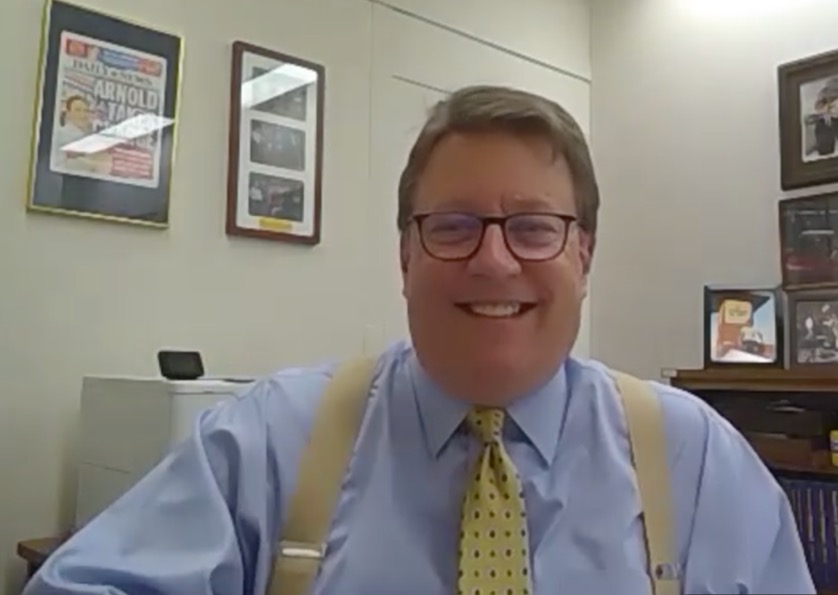This article originally appeared at Newsmakers with Jerry Roberts.
One year ago, the (all rise) deputy director of California’s Department of Finance checked in with dreadful news about how the pandemic would batter the state budget — a $54 billion deficit, vast revenue losses, painful cuts, deficits as far as the eye could see.
This week, Sacramento fiscal honcho H.D. Palmer returned to Newsmakers to explain why that doomsday forecast was totally wrong.
“We didn’t know where the bottom was,” Palmer recalled of the saturnine fiscal landscape of May 2020.
In a seeming miracle of economic jujitsu, the Department of Finance today foresees a $56 billion surplus for the fiscal year that begins on July 1, Palmer told us on Wednesday, within a $286 billion budget that includes an expansive spree of new spending — $600 cash payments for a large majority of citizens, whopping increases on programs for the homeless, a big boost in per-student spending, a new pre-K public school program, and health care for aging undocumented citizens, for starters — which Gov. Gavin Newsom, not immodest by nature, has been trumpeting daily as his “California Comeback Plan.”
In a happy surprise for Gavin, Sacramento finds itself awash in money at the very moment he’s campaigning to fight off a recall.
Oh, did he mention the cash for rural broadband, the 2028 Olympics, or his parking ticket forgiveness program?
BUY, BUY, SELL, SELL… As a financial matter, California’s budget bonanza has little to do with acts of governance that the governor or Legislature did or did not perform.
As Palmer makes clear in our interview, the single biggest factor in the turnaround is the massive stock market gains thrown off by the COVID catastrophe — unforeseen in 2020 by state forecasters — generating capital gains that accrued to the most wealthy Californians, who in turn paid a chunk under the state’s top-heavy system of taxation.
The three most critical revenues for state government are the corporation, sales, and personal income taxes, and it is the latter that is largely responsible for enabling what the embattled governor has termed a “transformational … historic budget.”
As Palmer noted, the top one percent cohort of taxpayers finance about 40 percent of the general fund via the state income tax. More broadly, the top 20 percent pay out 90 percent of income tax revenues, which finance two-thirds of the operating budget.
Such a good deal for everyone else!
Except … the market goes up, the market goes down, and state government’s heavy reliance on its fluctuations and foibles makes California’s tax system enormously volatile — and subject to sudden plunges, such as the one that accompanied the first dot.com crash at the turn of the century, paving the way for the, um, recall of Gov. Gray Davis.
As the Legislature begins to impose its imprint on Newsom’s latest budget proposal, its actions will affect millions of students and their teachers, hundreds of thousands of public employees, unemployed workers, and the rolls of poor, homeless, and otherwise vulnerable residents, immigrants, and children who rely on medical, welfare, and food programs — not to mention every taxpayer who uses state roads, parks, and beaches or lives at risk of earthquake, wildfire, or flood.
In our interview, Palmer clearly explicates this and many other complexities, contradictions, and complex crosscurrents of politics and policy underpinning the astonishing resurgence of state government’s wherewithal, preparedness, and ability to spend your money.
Check out our conversation with H.D. Palmer via YouTube below or by clicking through on this link. The podcast version is here.

